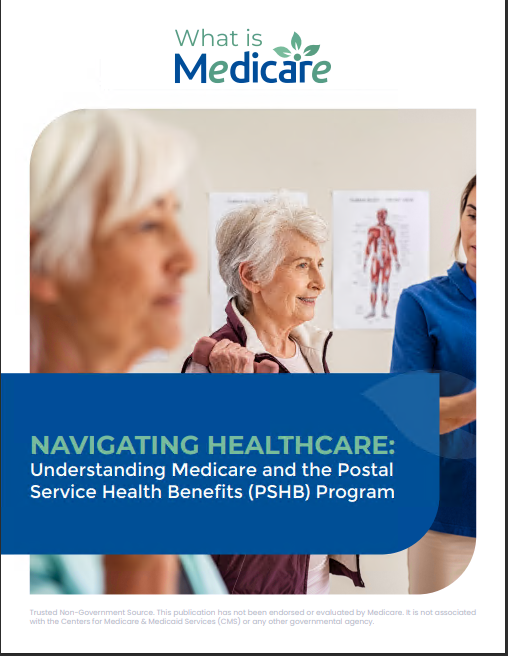Key Takeaways
-
Medicare premiums and deductibles for 2025 are changing, impacting how much you’ll pay for Parts A, B, and D.
-
Understanding these changes helps you better plan for your healthcare costs in the new year.
Understanding Medicare Costs in 2025
As the new year approaches, Medicare beneficiaries are gearing up for adjustments to premiums, deductibles, and coverage limits. Staying informed about these changes is crucial for effectively managing your healthcare expenses and maximizing your benefits. Whether you’re enrolled in Original Medicare or exploring Part D drug coverage, here’s what you need to know for 2025.
Medicare Part A: Hospital Insurance Updates
Premiums for Part A
Most beneficiaries qualify for premium-free Part A, but if you’ve worked fewer than 40 quarters, you may pay a monthly premium. For 2025:
-
Fewer than 30 quarters of work: $518/month.
-
30-39 quarters of work: $284/month.
Deductibles and Coinsurance
Part A covers inpatient hospital stays, skilled nursing facilities, and some home health care. However, these benefits come with specific cost-sharing requirements:
-
Inpatient hospital deductible: $1,676 per benefit period.
-
Coinsurance: $419 per day for hospital stays lasting 61-90 days; $838 for lifetime reserve days.
-
Skilled nursing facility coinsurance: $209.50 per day for days 21-100.
With these costs, understanding how many days you might spend in a facility or hospital can directly affect your budget. Being aware of coverage limits for lifetime reserve days is especially important for planning.
Medicare Part B: Medical Insurance Adjustments
Monthly Premiums
For most beneficiaries, the standard monthly premium for Part B will rise to $185 in 2025. Those with higher incomes will pay an Income-Related Monthly Adjustment Amount (IRMAA), which could add significant costs. Knowing if your income places you in a higher bracket can help avoid surprises.
Annual Deductible
The Part B deductible will increase to $257. After meeting the deductible, you’ll typically pay 20% of the Medicare-approved amount for services like doctor visits, outpatient therapy, and durable medical equipment. Since these services can add up over time, tracking how often you’ll need care can keep costs manageable.
Additionally, managing chronic conditions that require regular outpatient care can make Part B’s coverage limits and costs especially impactful to your budget.
Medicare Part D: Prescription Drug Coverage Enhancements
Out-of-Pocket Cap
A major win for Part D enrollees in 2025 is the introduction of a $2,000 annual out-of-pocket cap for prescription drugs. This change eliminates the infamous “donut hole” and provides financial relief for those with high medication costs. If you’ve struggled with rising drug expenses in previous years, this change could drastically reduce your spending.
Maximum Deductible
The maximum deductible for Part D plans will increase to $590. Once you meet the deductible, you’ll enter the initial coverage phase, where you pay a share of drug costs until your spending reaches the catastrophic coverage threshold. This phase still allows for cost-sharing but ensures predictability in your financial obligations.
Medicare Prescription Payment Plan
New in 2025, the Medicare Prescription Payment Plan lets you spread out-of-pocket drug costs over monthly payments throughout the calendar year. This option can help ease the financial burden of high prescription expenses, offering a structured payment method.
Additionally, it’s essential to verify how this plan aligns with your regular pharmacy needs and whether your Part D provider has easy enrollment options.
How These Changes Affect Your Budget
Understanding the impact of these adjustments is key to financial planning. Here’s a breakdown:
Increased Part B Costs
The $185 monthly premium and $257 deductible may seem small individually but can add up over time. For example, if you frequently visit specialists or rely on outpatient therapies, the 20% coinsurance adds a layer of cost. Planning for routine care ensures that these increases don’t disrupt your finances unexpectedly.
Relief with Part D’s $2,000 Cap
The $2,000 cap on out-of-pocket drug costs is a game-changer. If you’re managing multiple medications, this limit ensures that your expenses are predictable and manageable. Combined with the Payment Plan option, you’ll have greater control over how and when you pay for medications.
Coinsurance Adds Up
Coinsurance rates for hospital stays and skilled nursing facilities emphasize the importance of understanding how long-term care needs could impact your finances. For instance, a longer hospital stay might result in significant out-of-pocket expenses. Calculating how these stays intersect with your Part A and supplemental insurance can help reduce surprise costs.
Additionally, considering alternatives for skilled nursing services—such as home-based care—could further alleviate expenses tied to Part A coinsurance.
Tips for Managing 2025 Medicare Costs
Take Advantage of Preventive Services
Many preventive services under Medicare Part B are covered without additional costs, such as screenings and annual wellness visits. Utilize these to stay ahead of potential health issues and avoid higher treatment costs later. For example, routine checkups might catch a condition early and eliminate more costly treatments down the road.
Consider Your Prescription Drug Needs
Evaluate your current medications to determine if the new $2,000 out-of-pocket cap benefits you. If your drug costs are high, the Medicare Prescription Payment Plan might be worth exploring. Additionally, revisiting your formulary during Open Enrollment ensures you’re maximizing available discounts and avoiding unnecessary costs.
Review Your Medicare Plan During Open Enrollment
The Annual Medicare Open Enrollment Period (October 15 to December 7) is your opportunity to adjust your coverage. Use this time to compare plans, evaluate costs, and ensure your plan aligns with your needs for 2025. Pay close attention to any changes in plan formularies, premiums, or covered services.
For beneficiaries switching plans, understanding new in-network providers can prevent unexpected charges.
Coordinate Medicare with Other Coverage
If you’re eligible for employer coverage or Medicaid, coordinating these with Medicare can reduce your overall costs. Check if your supplemental insurance or Medigap policy offsets some of the increased expenses. Being proactive in verifying dual eligibility coverage can save you thousands annually.
What You Should Know About Enrollment Periods
Enrolling or making changes to your Medicare plan happens during specific periods. Missing these windows could result in penalties or gaps in coverage.
Initial Enrollment Period (IEP)
If you’re approaching 65, the IEP is your first opportunity to sign up. This seven-month period spans the three months before, the month of, and three months after your birthday. Enrolling during this period avoids late penalties, which can increase premiums permanently.
Annual Enrollment Period (AEP)
The AEP runs from October 15 to December 7 every year. During this time, you can:
-
Switch between Medicare Advantage and Original Medicare.
-
Join or drop a Part D plan.
-
Change Medicare Advantage plans.
Beneficiaries who act early in AEP often avoid delays in coverage adjustments, ensuring a seamless transition to their new plan in January.
Special Enrollment Periods (SEP)
Certain life events, such as moving or losing employer coverage, qualify you for an SEP, allowing you to make changes outside regular enrollment periods. Understanding what triggers SEP eligibility ensures that you’re never without necessary coverage during transitions.
Common Questions About Medicare Costs in 2025
Will Everyone Pay Higher Part B Premiums?
Not necessarily. While most will see the standard $185 premium, those with higher incomes will pay more, depending on their modified adjusted gross income (MAGI). Reviewing your income tax filings ensures you’re prepared for any adjustments due to IRMAA.
How Does the Part D Cap Work?
Once your total out-of-pocket spending on prescription drugs reaches $2,000, you won’t pay any additional costs for covered medications for the remainder of the year. This cap is automatic, ensuring transparency in your spending limits.
Can I Change Plans If I’m Unhappy With Costs?
Yes. The AEP is your chance to compare options and select a plan that better fits your needs and budget for the coming year. Actively comparing plans prevents overpaying for unnecessary features.
Stay Ahead of Medicare Changes
Keeping track of Medicare updates ensures you’re prepared for shifts in costs and benefits. By understanding your options and staying proactive, you can minimize surprises and make the most of your coverage.










